Upskilling is an approach to this problem that arms these employees with a new and improved skill set that brings them fulfillment while offering your company a deeper talent roster to draw from.
In other words, it’s a win-win. And in this MentorCruise article, we'll help you reap the rewards by delving deeper into employee upskilling. We’ll outline its advantages, best practices, and methods for implementation to help set you on the right path.
Let’s get started!
Upskilling means offering employees opportunities to enhance their existing skill sets to become more efficient, productive, and successful.
It usually involves training programs, workshops, mentorships, or coaching sessions designed to target a specific skill (sometimes multiple). An expert will teach the employee what they know to upgrade their ability to execute their job.
An example? Let’s take a look at Egle Zuzeviciute’s experience.
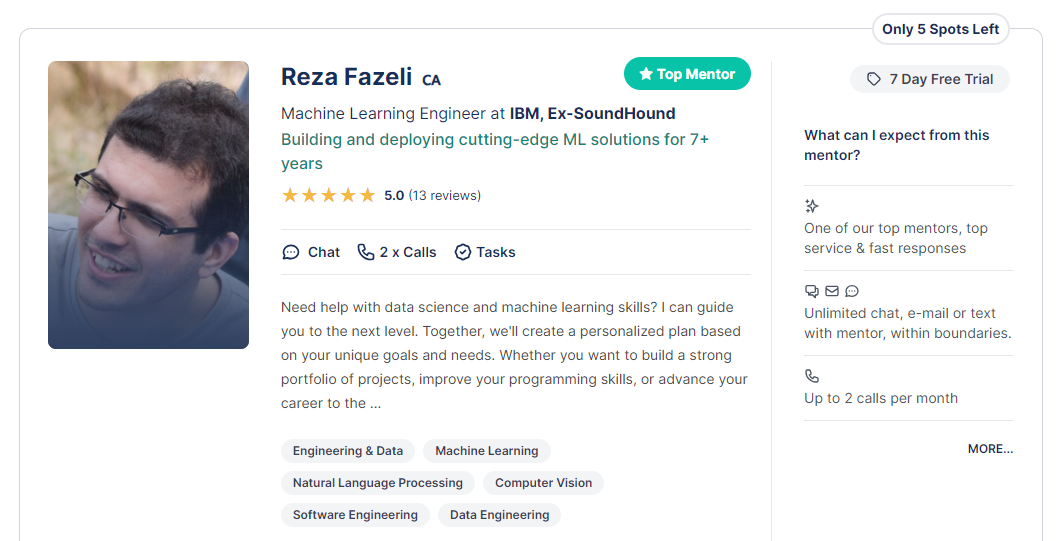
Within a few weeks of booking her first mentorship sessions through MentorCruise, she learned how to utilize various marketing tools and improve her work. This allowed her to better manage her position as a product marketer and gain all the expertise she needed.
MentorCruise connects talented employees with industry-leading coaches and mentors with the skills and experiences to get them where they want to be. Whether you want to brush up your skills with a specific tool or expand your skill set for a new role, MentorCruise is the perfect way to help your employees build their skill sets and advance their careers.
Upskilling and reskilling are both forms of professional development—but that’s where the similarities end.
Upskilling is focused on upgrading an existing skill set. If you’re a junior digital marketer with skills relating to long-form content (SEO optimization, blog writing, etc.), an upskilling program would help you gain additional skills in this vertical—keyword research, SEO tools, etc.
Reskilling is focused on learning a completely different set of skills so you can pursue a new or expanded career path or role. If you’re a non-technical SaaS founder with a background in marketing and sales, you might choose to participate in a reskilling program to gain technical skills like coding, database management, and UX design.
Upskilling is excellent for filling performance gaps. When you improve your employees' existing skills and capabilities, you can save time and money while maintaining a high-performing team.
Reskilling is better for filling skill gaps (without hiring new employees). If there’s an essential skill set that’s lacking from your team, you can reskill employees (who you’ve already built up trust with) to fill it.
In a study, Gallup found that almost half of all American workers would think about switching companies if they had more chances to advance and improve their skills. Another survey found that employees who have the chance to advance their talents are 34% more likely to stay with the company and 15% more engaged as a whole.

These stats highlight the importance of upskilling as a tool for attracting and retaining top talent. It’s one of the biggest reasons why high-performing companies like Kickstarter, Ripple, and Feed.fm use MentorCruise to offer employees ample upskilling opportunities through mentorships.
According to studies, employee skill shortages pose a significant concern for many companies. Moreover, in a survey from West Monroe, 56% of participants admitted “moderate to severe” skills gaps in their organizations, while only 6% claimed to have no skills gaps at all.
Employee development initiatives and performance improvement plans emerge as a solution to this problem. These initiatives effectively close these gaps, resulting in increased productivity and performance among current employees. Companies can reduce the need for additional workers to deal with rising technology and expanding knowledge systems by upskilling their employees. This method improves efficiency while simultaneously optimizing resource allocation.
For example, Monica participated in a MentorCruise mentorship for professional growth and development. As a result, she could eliminate critical skill gaps by developing her Flutter skills.
Employees want to feel like they’re progressing in their careers. Why they do, their companies benefit from a more productive and engaged workforce.
Glint data shows that employees regularly rank access to learning and growth opportunities as the most influential aspect in building a positive workplace culture. Visibly investing in career development lets your employees know that the opportunity is there for them if they want it.
Most employees believe companies that want to improve their workplace culture should prioritize professional development opportunities. According to a LinkedIn study, 59% of those surveyed believed that companies should prioritize investing in this area. Interestingly, this choice was ranked higher than other essential factors like flexible work arrangements and mental health and wellbeing programs.
When your employees are happy, the likelihood of delighting customers increases dramatically.
Employees who are satisfied with their jobs tend to be more committed to the company and become brand champions internally and outside your consumer base. Interestingly, happy customers frequently become loyal, creating a positive loop that benefits your employees and your organization.
Based on PWC survey results, 93% of CEOs undertaking upskilling programs report increased productivity. Moreover, several large companies thrive with employee upskilling and enterprise mentoring, including Clyde & Co, Marks & Spencer, Google, and many more.
This is due to employees receiving the necessary skills, which frees up time for value-added activities like enhanced communication and innovative problem-solving. Training for automation tools, which reduces repetitive activities, is also part of upskilling.
Fortunately, 77% of employees are receptive to learning new skills, allowing leaders to enhance productivity and support ongoing growth.
The pandemic highlighted companies' vulnerability to abrupt change. Leaders may create organizational agility and resilience by prioritizing people's personal and professional development. This proactive approach gives businesses new insights and commercial acumen, ultimately improving their competitiveness in a volatile environment.
The length of an employee upskilling program is one of your most important considerations.
Too long, and you face risks like disengagement with the training process, productivity decline, and burnout. Too short, and you may not equip employees with the skills they set out to learn.
How do you set a duration?
One option is a flexible approach using a set success criterion, such as passing an assessment or completing a project. Employees will participate in training sessions until they can meet the criterion.
Another option is to set a fixed duration for all participants, such as three weeks or six months. Depending on the skill's complexity, this method will likely take some trial and error but will ultimately lead to a highly efficient program.
Location, location, location. This is an essential factor to consider when developing a training program. Depending on the size and geography of your organization, you may need to accommodate learners in different areas or even countries.
In-person training sessions are practical, but they’re a bad match for companies with distributed workforces.
Live, virtual training sessions combine the engaging face-to-face aspect of in-person training with the flexibility and location-independence of online training. They’re also a great option for companies with multiple locations, as learners can attend sessions from their workstations.
The focus of your upskilling program is the key to its success. What’s the goal of the program? Are you upskilling employees for their current roles or preparing them for future ones?
As you set the focus, ensure you include participants in the process. Your employees will have a unique perspective about the skills and knowledge essential for success in their roles, and you can use those insights to develop tailored upskilling programs.
A learning management system (LMS) is a great way to track employees’ progress while maintaining accountability and ensuring support is available as needed.
Smaller businesses may be able to get away with using manual oversight (usually handled by managers or team leaders). Those responsible for the upskilling program will create and facilitate curriculums, track progress toward objectives, create dashboards to track individual development, and report outcomes to management.
In addition, it's crucial to recognize the significance of feedback. Motivating students to provide input on the quality of their training and instructors can enhance the program. Measuring outcomes in line with goals is also essential. For example, comparing the retention rates of upskilled personnel with non-upskilled employees can illustrate the program's impact and help with buy-in for future programs.
As industries evolve rapidly, the need for new yet-to-be-developed skills becomes increasingly vital to stay competitive. Conducting a skill gap analysis can aid in consistently assessing available skills and comparing them with the skills you need.
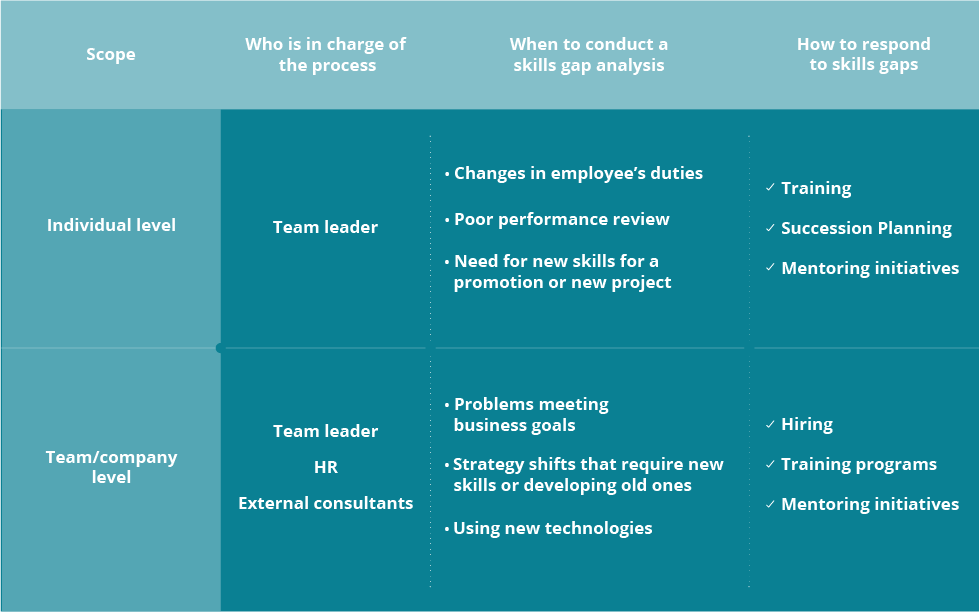
When conducting a skill gap analysis, accurately evaluating your employees' current skills is crucial. This starts with a review of your organization's strategy and how jobs are distributed across divisions.
Then, conduct a granular examination of individual employees' skills within their teams.
Combine surveys with quantitative and qualitative data from the tools you use to measure employee performance. Create a skill matrix and develop a system for ranking employees' skills and competency levels without bias.
Once skill gaps have been identified, it’s time to prioritize specific gaps and build a complete training strategy.
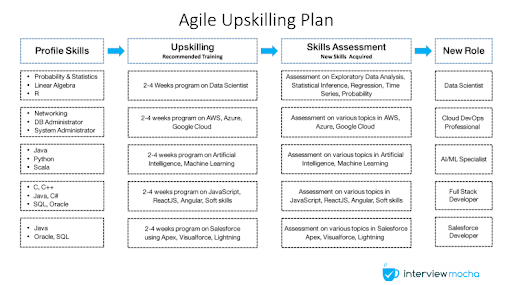
This process includes critical elements like setting an appropriate budget, finding optimal training resources (both internal and external), establishing realistic timetables, and developing metrics to measure training progress.
Critical questions must be addressed during the implementation planning phase:
Once you have your answers, convert them into an organized strategy that covers:
Organizations can build a solid upskilling strategy that encourages skill development effectively and efficiently by painstakingly addressing these factors.
Personalized training journeys are necessary for retaining employee enthusiasm. They allow people to devote more time and work to areas that need improvement while putting less effort into already-acquainted topics.
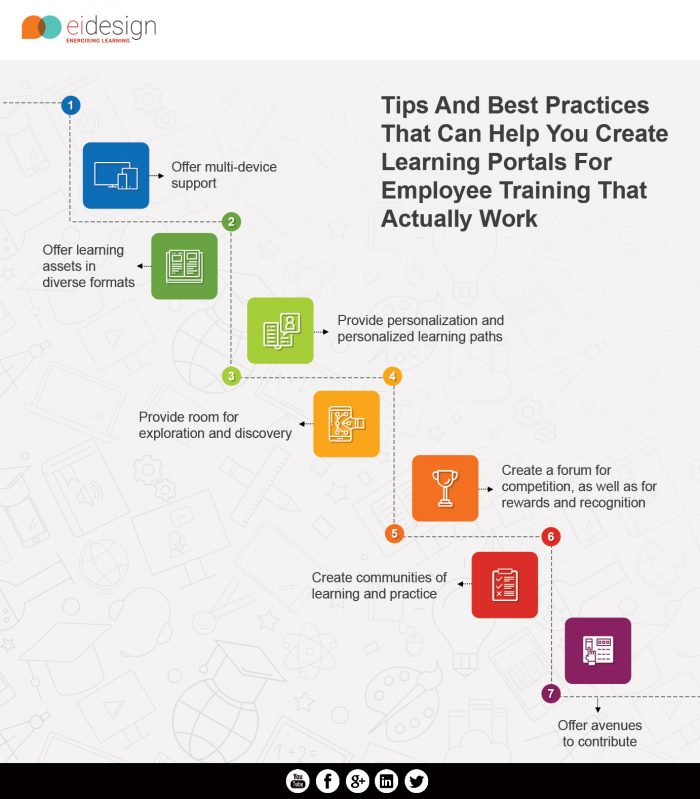
Obtaining this balance, however, might be difficult using traditional training methods. Enter e-learning, a critical tool for creating highly tailored training experiences.
At MentorCruise, we understand the importance of upskilling and how it can benefit professionals and businesses.
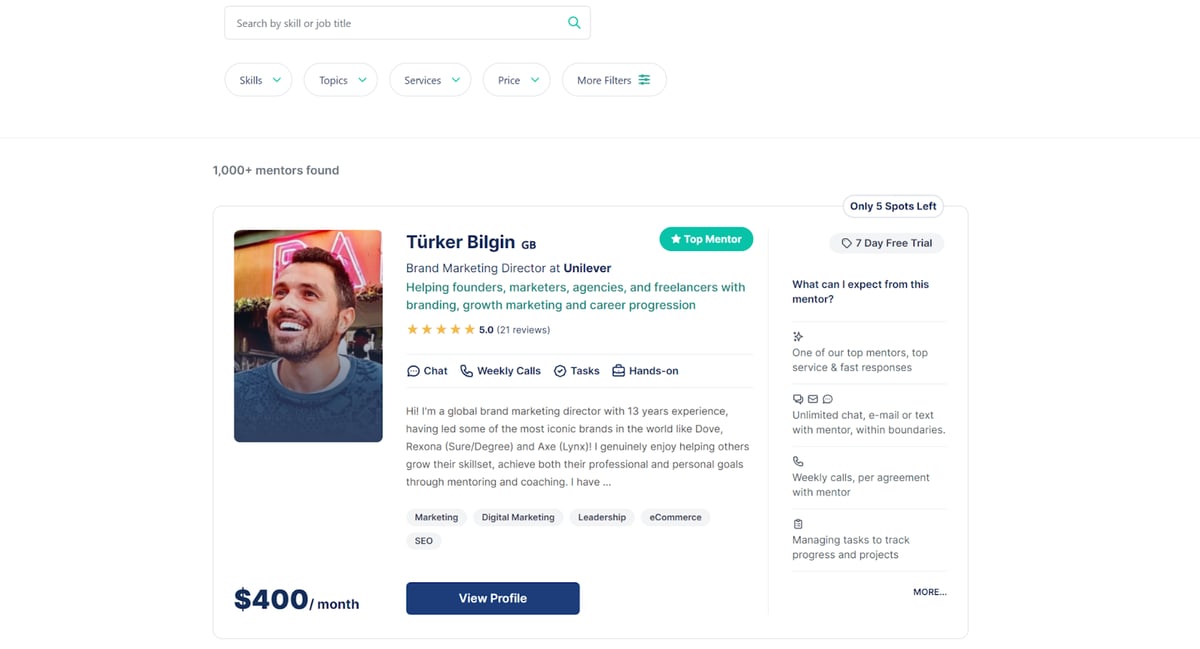
That's why we connect professionals with experienced mentors who provide personalized guidance and support through the upskilling process. Investing in staff development and upskilling helps professionals grow in their careers and reduces the need for businesses to hire new employees to handle technological advancements and company growth.
The effectiveness of upskilling efforts depends on the employees' dedication to personal progress. Cultivating a culture of continuous learning is critical to making skill growth a lifelong journey rather than a one-time event. Encourage employees to actively seek learning opportunities in their daily routines and share their discovered information and competencies with their coworkers.

Furthermore, clarity and alignment are critical for achieving successful upskilling programs. Ensure that your workers understand and support your goals. Explain why retraining programs are being implemented and the benefits they stand to reap. Provide insights into how this attempt will enrich their professional career and boost their confidence in accepting this transforming experience.
The upskilling process must be continuous to enable individuals to reach their full potential, negotiate the never-ending demand for new skills, and progress alongside the firm. As technological advances and societal developments continue to disrupt the norm, the key lies in refining tactics to meet the company's ever-changing needs.
Regular evaluation of your upskilling strategies is critical for maximum effectiveness. This approach allows you to assess the overall impact and identify areas that require improvement. This allows you to make necessary changes and align tactics with company needs and personnel requirements. The result is a culture of continuous learning that is responsive and adept at quickly adapting to the changing needs of the landscape.
Employee involvement is invaluable in developing an effective upskilling program.
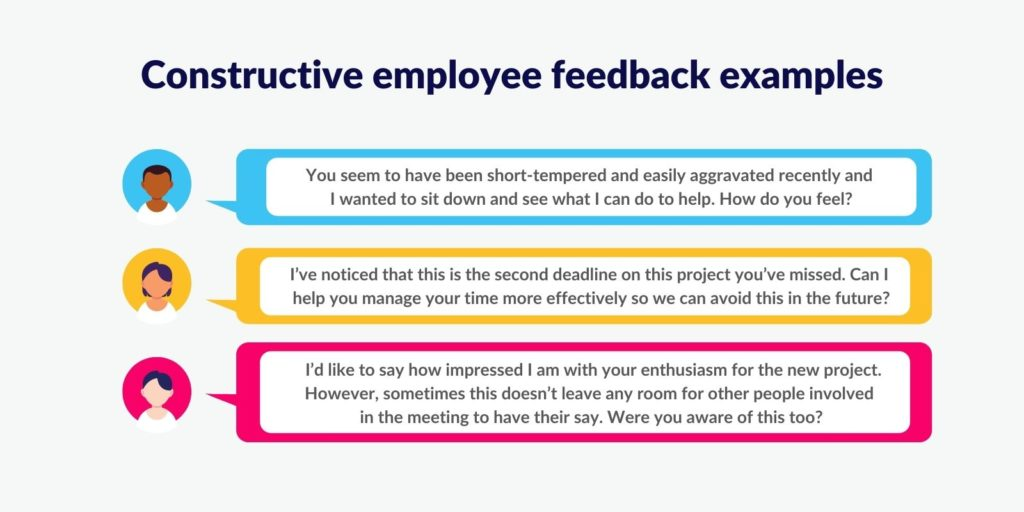
For interesting material, prioritize their thoughts and link the program with their interests. By doing so, you inspire motivation in employees to actively participate in various training activities, fostering a pervasive learning culture across the organization.
As an HR manager, you must ensure that your training sessions align with the company's productivity and day-to-day operations. But it’s also critical that staff feel supported throughout these meetings. Taking on this endeavor requires effective time management.
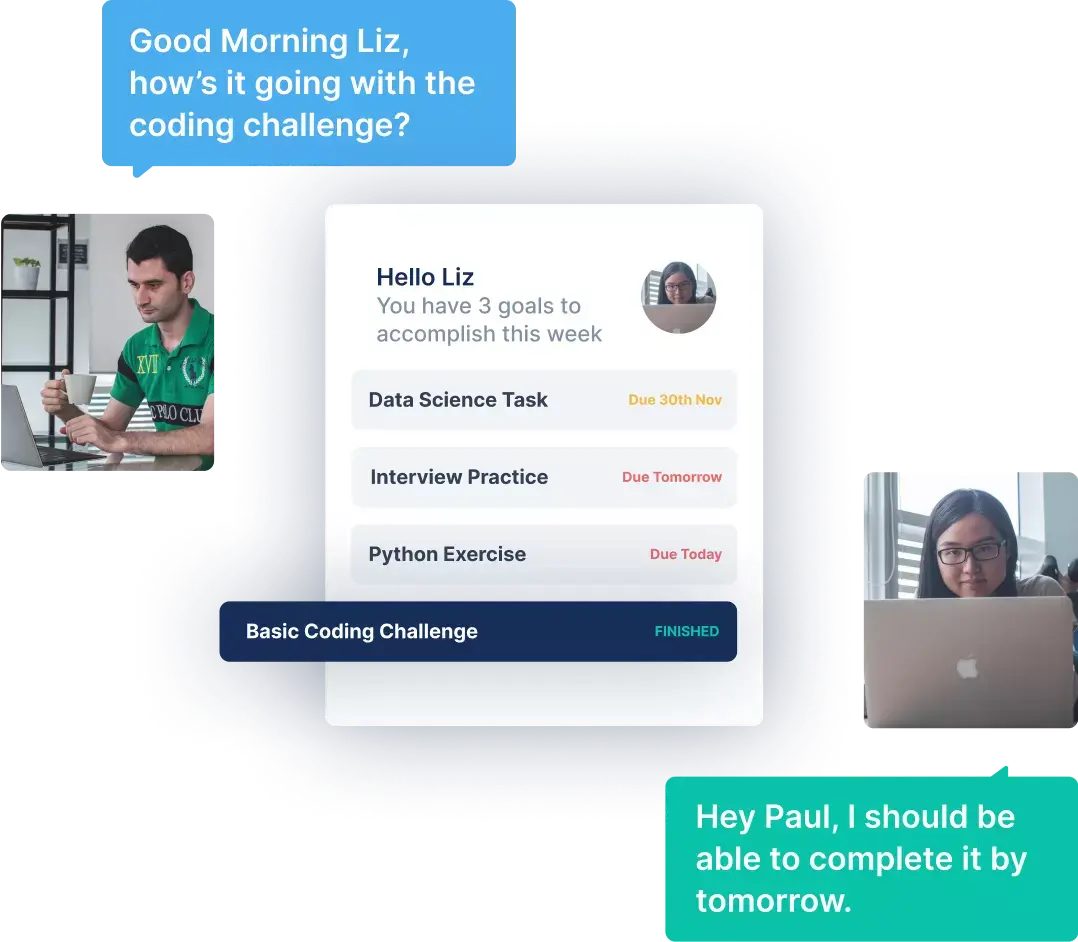
MentorCruise offers mentorships to enhance your employees' learning journey without interrupting your company's daily operations. The platform allows individuals to upskill without the stress of conflicting commitments. MentorCruise provides flexible mentorship sessions tailored to fit your daily schedule.
Setting short-term goals is a great way to build small wins into what can be a long process.
When employees and trainers alike get to celebrate program successes on the road to program completion, it helps keep morale high and keeps everyone motivated.
The short-term goals you set will depend on the program you’re running, but it often makes sense to build them around specific learning objectives or skills, like:
Progress assessments and reports are a great way to measure employees' progress through a program and reward their successes with official recognition.
Allowing employees to embark on a career progression journey assists them in sharpening their skills in desired sectors. It is critical to provide varied career paths and allow people to choose based on their interests. This method enables them to gain experience in their existing roles, which benefits the firm in the long run. Employee excitement for upskilling initiatives creates the basis for a successful strategy.
Employees may occasionally require an incentive to complete lengthy training programs. This can be accomplished by providing them with a well-defined training path.
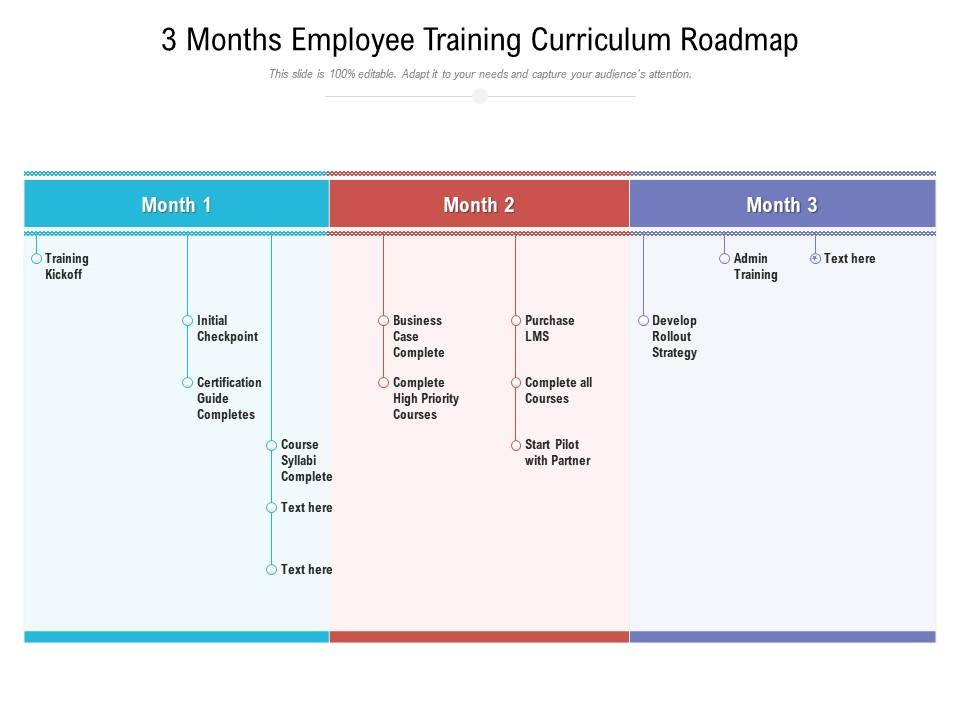
A roadmap should clearly describe the starting and ending points and articulate the training's aim. A thorough roadmap comprises content, duration, location, instructions, and a schedule. A solid roadmap also includes performance evaluations, which motivate personnel to work tirelessly toward the ultimate goal.
Developing a successful employee upskilling program is a strategic investment that benefits the company and its employees. It promotes a learning culture, increases production, and ensures long-term competitiveness.
With MentorCruise, your company can unleash the full potential of its people while navigating the changing demands of the modern business world. Take advantage of the chance to empower your staff and drive your organization's success by launching a solid upskilling initiative.
Take the next step in revolutionizing the growth of your workforce. Start your 7-day free trial and discover thousands of amazing mentors with the skills and experience to upskill your team.
Find out if MentorCruise is a good fit for you – fast, free, and no pressure.
Tell us about your goals
See how mentorship compares to other options
Preview your first month
